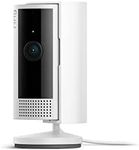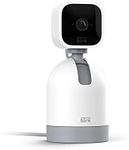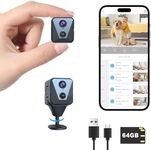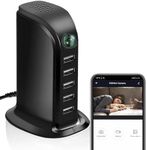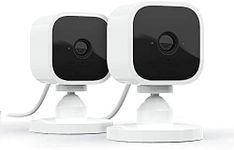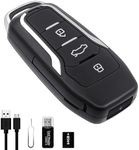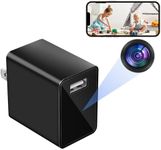Buying Guide for the Best Mini Spy Cameras
Choosing a mini-spy camera can feel overwhelming because there are so many options and features to consider. The key is to think about how and where you plan to use the camera, such as for home security, monitoring pets, or keeping an eye on your office. Understanding the main specifications will help you find a camera that fits your needs and gives you the best performance for your situation.ResolutionResolution refers to the clarity and detail of the video or images the camera captures. Higher resolution means clearer and sharper footage, which is important if you need to identify faces or small details. Mini-spy cameras typically range from standard definition (SD) to high definition (HD) and even full HD. SD is usually enough for basic monitoring, but if you want to clearly see what's happening, HD or higher is better. Think about what you need to see in your recordings—if you just want to know if someone entered a room, lower resolution may be fine, but for clear identification, go for higher resolution.
Battery LifeBattery life tells you how long the camera can operate before needing a recharge or new batteries. Some mini-spy cameras can last only a few hours, while others can go for days on a single charge. If you need continuous monitoring, look for longer battery life or options that can be plugged in. If you only need to record short events or use the camera occasionally, shorter battery life may be acceptable. Your choice should depend on how long you need the camera to run without interruption.
Storage CapacityStorage capacity is about how much video or how many photos the camera can save. This is usually measured in gigabytes (GB) and can be built-in or expandable with a memory card. More storage means you can record longer before needing to delete or transfer files. If you plan to record high-resolution video or want to keep footage for several days, look for higher storage options. If you only need short clips or plan to check and clear the storage often, less capacity may be enough.
Motion DetectionMotion detection is a feature that allows the camera to start recording only when it senses movement. This helps save battery and storage space, and makes it easier to find important events in your footage. Some cameras have adjustable sensitivity, so you can set how much movement triggers recording. If you want to avoid hours of empty footage, or only care about specific events, motion detection is very useful. Consider how much activity you expect in the area you’re monitoring to decide if this feature is important for you.
Night VisionNight vision lets the camera record clear video even in low light or complete darkness, using special sensors or infrared lights. This is important if you need to monitor areas at night or in dark rooms. Some cameras have basic night vision that works for a few feet, while others can see much farther. Think about when and where you’ll use the camera—if you need to see in the dark, make sure the camera has good night vision capabilities.
Size and ConcealmentThe size and design of a mini-spy camera affect how easily it can be hidden or disguised. Smaller cameras are easier to conceal in everyday objects or tight spaces, which is important if you want the camera to go unnoticed. Some cameras are designed to look like common items, such as clocks or USB chargers. Consider how discreet you need the camera to be and where you plan to place it to choose the right size and style.
ConnectivityConnectivity refers to how the camera sends or stores its footage. Some cameras save video to a memory card, while others can connect to Wi-Fi and let you view footage live on your phone or computer. Wi-Fi cameras are great if you want to check in remotely, but they may need a stronger power source. If you don’t need live viewing, a camera that records to a card may be simpler. Think about whether you want to watch footage in real time or just review it later to decide which type of connectivity is best for you.
